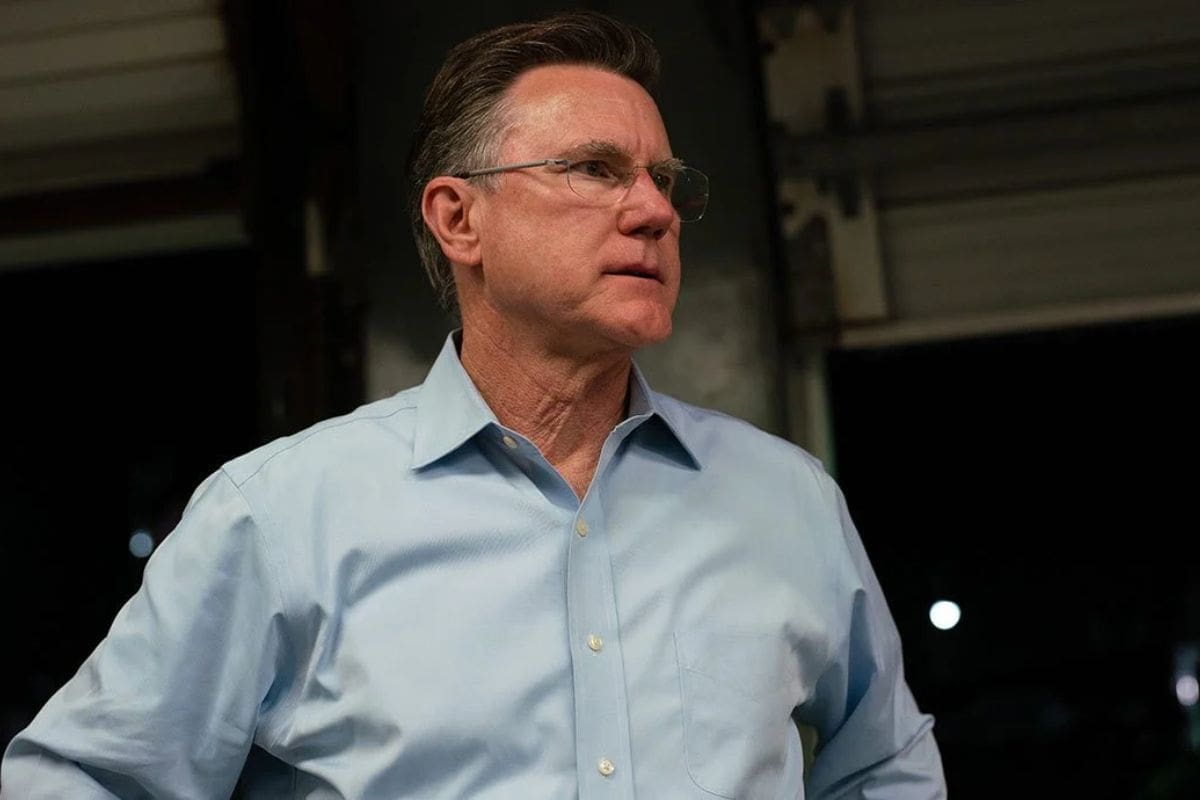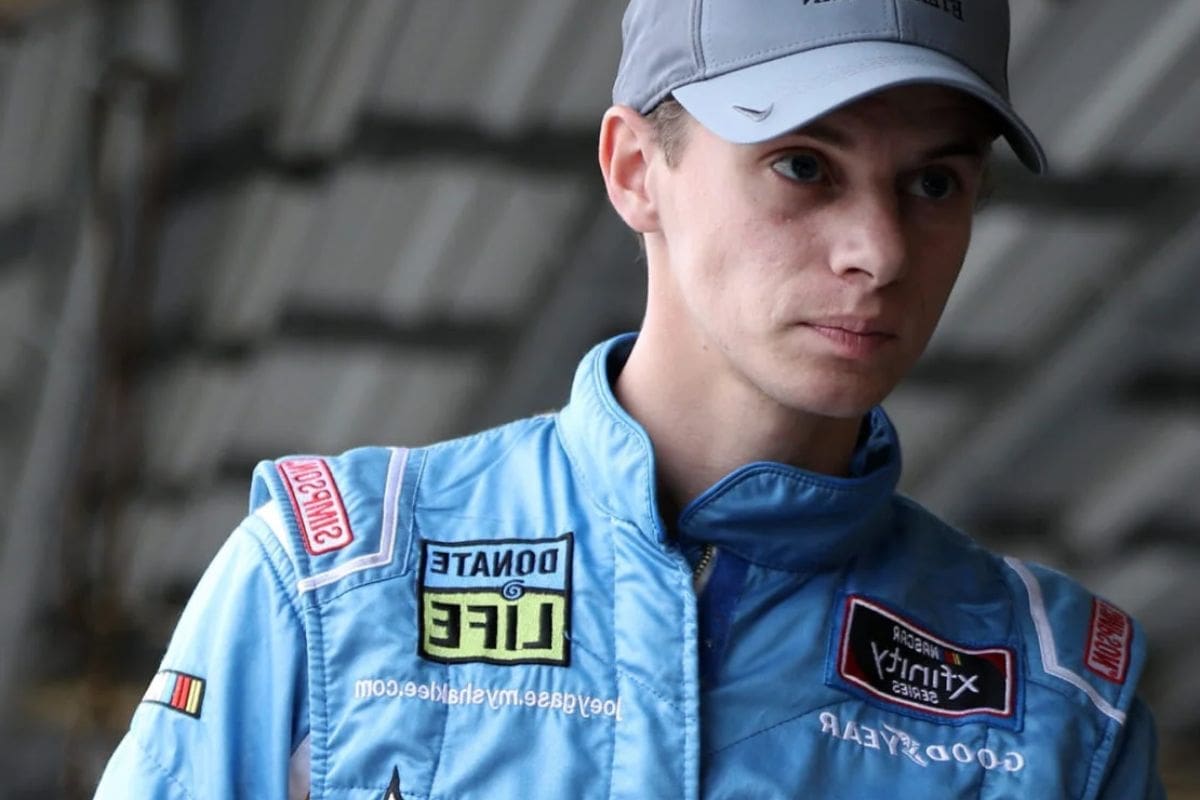Elton Sawyer’s Verdict on Joey Gase: Elton Sawyer’s evaluation of Joey Gase’s actions at Richmond encapsulates a professional approach to discipline within NASCAR. By balancing strict measures with understanding, Sawyer’s remarks highlight the sport’s commitment to safety, integrity, and sportsmanship. Gase’s penalty for breaching NASCAR’s safety protocols emphasizes a zero-tolerance stance on hazardous behavior. However, the decision also showcases NASCAR’s dedication to evaluating the context and intent behind actions, fostering a culture of accountability among drivers. This incident sets a precedent for future conduct in NASCAR, subtly shifting the competitive landscape towards a safer, more respectful racing environment. Further exploration provides insight into the evolving dynamics of driver behavior and regulatory responses.
Key Takeaways
- Elton Sawyer provided balanced remarks, emphasizing understanding Joey Gase’s actions within context.
- Gase was fined for violating NASCAR’s safety protocols, reflecting the sport’s strict stance on hazardous behavior.
- Sawyer’s response highlighted NASCAR’s approach of blending discipline with empathy toward drivers’ actions.
- The decision shows NASCAR’s commitment to maintaining a safe racing environment for all participants.
- The verdict aims to influence future driver behavior, prioritizing safety and sportsmanship in the sport.
Joey Gase’s On-Track Antics at Richmond
During the Xfinity Series race (ToyotaCare 250) at Richmond, Joey Gase’s decision to hurl his bumper cover at Dawson Cram mid-race became a focal point for discussions on sportsmanship and professionalism within NASCAR. This incident, far from being a mere outburst of emotion, speaks volumes about the underlying pressures and competitive tensions that characterize the high-speed world of stock car racing. Gase’s actions, propelled by a clear fit of frustration, highlight the intense environment in which drivers operate, where moments of strain can lead to decisions that reverberate beyond the confines of the track.
Analyzing the incident within the broader context of NASCAR racing, it is evident that such actions, while rare, are not entirely isolated. The physical and psychological demands on drivers are immense, fostering an atmosphere where the line between competitive spirit and outright aggression can sometimes blur. Gase’s choice to toss the bumper cover, an act of manifest irritation, highlights a momentary lapse in judgment that, while understandable within the high-stress milieu of racing, raises questions about the mechanisms in place for managing emotions and maintaining decorum under pressure.
This event also serves as a lens through which to examine the culture of accountability and sportsmanship within NASCAR. The expectation is that competitors will navigate the thin ice of aggressive racing and personal animosity with professionalism. Gase’s actions, hence, not only reflect on him as an individual competitor but also on the racing community’s collective values regarding conduct in the heat of competition.

NASCAR’s Response and Elton Sawyer’s Remarks
In the wake of Joey Gase’s controversial actions at the Richmond race, NASCAR’s Senior Vice President Elton Sawyer publicly addressed the incident, offering a mature perspective that highlighted the complexity of maintaining discipline within the sport. Sawyer’s remarks, imbued with a hint of sarcasm, emphasized a deep understanding of the challenges faced by the governing body in policing driver behavior while also signaling a clear message about NASCAR’s stance on such matters.
Elton Sawyer’s response to Gase’s antics was not merely punitive but reflective of a broader strategy to balance enforcement with empathy. By acknowledging the incident with a mix of concern and understanding, Sawyer navigated the fine line between strict regulation and fostering a competitive spirit among drivers. His approach suggested a sophisticated grasp of the dynamics at play within NASCAR, where actions on the track often resonate beyond the confines of the race itself.
Sawyer’s comments shed light on the intricate process behind disciplinary decisions in NASCAR. Rather than a straightforward condemnation, his response was indicative of a thoughtful evaluation of the incident, considering not only the act itself but its implications for the sport’s integrity and appeal. This level of analysis, coupled with a keen awareness of the drivers’ perspectives, exemplifies the depth of consideration that informs NASCAR’s disciplinary measures.
Ultimately, Elton Sawyer’s handling of the Joey Gase situation revealed much about NASCAR’s approach to governance. It’s an approach that values understanding and context, aiming to strike a balance between upholding standards and recognizing the passionate, sometimes unpredictable, nature of racing.
Kudos to him for a great over-the-head pass. I think a lot in the NCAA appreciate that at this time of the year. Spot on with this throw. So there is really throwing the bumper cover or a helmet or something of that nature, we have really stayed out of that.”( Sawyer )
“We are kind of cross the line with when he get down there and it is strictly safety. You have got cars and trucks that are single file and the obvious things that come to mind are not good. So I will leave this car and I will go into our 8:30 competition meeting today and we will debrief on all those things and see where we land.”( Sawyer )
Joey Gase’s Penalty and NASCAR’s Rule Violation
Joey Gase’s recent fine by NASCAR for breaching section 8.8.8K of the rulebook highlights a critical moment in the sport’s ongoing efforts to guarantee safety and uphold competitive integrity. This section of the NASCAR rulebook is unequivocally devoted to maintaining a high standard of safety, emphasizing the organization’s zero-tolerance policy for any actions or omissions that compromise the well-being of competitors or create hazardous conditions. Gase, piloting the #35 Chevrolet for Joey Gase Motorsports, found himself at the center of this regulatory storm, spotlighting the stringent enforcement policies NASCAR is willing to employ to preserve the sanctity of safe competition.
The penalty levied against Gase underlines NASCAR’s commitment to a safe racing environment, with the rule in question serving as a broad but critical umbrella for addressing potential threats to safety on the track. This action by NASCAR also serves as a stark reminder to teams and drivers of the importance of adhering to safety protocols, irrespective of the competitive pressures that naturally exist in motorsports. Analyzing the implications of Gase’s penalty, it becomes evident that NASCAR’s regulatory framework is designed not only to react to incidents but to proactively deter behaviors that could lead to unsafe conditions.
This episode reinforces the notion that safety is paramount in NASCAR, with the organization prepared to enforce its rulebook to the letter to protect its competitors. Gase’s fine is a confirmation of NASCAR’s unwavering dedication to safety and competitive fairness, underpinning the sport’s integrity and the welfare of those who partake in it.
“A safety violation may be imposed for any action or omission by a Competitor or vehicle that creates an unsafe environment or poses a threat to the safety of the Competitors, as determined by NASCAR.” ( Rule book )
Gase’s Justification and Post-Race Comments
Attempting to highlight his contentious actions, Joey Gase candidly revealed the motives behind his decision to throw his bumper cover, framing it as an attempt to provide a ‘souvenir’ while also expressing frustration with Dawson Cram’s behavior and perceived team alliances. Gase’s comments offer a multifaceted perspective on an incident that has stirred significant conversation within the NASCAR community. By stating his intention to give a ‘souvenir’, Gase seemingly attempts to add a layer of levity to the situation. However, the underlying frustration with Cram’s actions and his own team’s support for Cram, despite a history of contention, hints at deeper issues of loyalty and competition dynamics within teams.

Gase’s justification, while unique, opens a window into the psychological warfare drivers often engage in, both on and off the track. His public disclosure of these frustrations not only serves as an explanation for his actions but also as a strategic move to voice his displeasure with the current state of team politics in NASCAR. This revelation provides a lens through which one can analyze the complex interplay of personal rivalries, team allegiances, and the pressures of high-stakes competition.
In dissecting Gase’s post-race comments, it becomes apparent that his actions, though controversial, are a manifestation of the intense emotional and psychological landscape drivers navigate. This incident, while isolated, highlights the broader themes of respect, loyalty, and the quest for recognition in a sport where the line between camaraderie and competition is often blurred.
“I just wanted to give him a souvenir.”( Gase )
Implications and Future of Driver Behavior in NASCAR
Reflecting on the recent penalty issued to Joey Gase, it becomes evident that NASCAR’s strict enforcement of rules could greatly influence drivers’ conduct in future competitions, potentially dampening the impulsivity that has characterized some of the sport’s most controversial moments. The imposition of a significant penalty on Gase signifies a crucial moment in NASCAR’s stance on driver behavior, suggesting a future where the consequences of actions are heavily weighed.
This decision may prompt drivers to reconsider the ramifications of their actions, embodying a more strategic and composed approach to racing. The deterrent effect of such penalties could lead to a shift in the dynamics of racing, prioritizing safety and sportsmanship over momentary lapses in judgment. NASCAR’s commitment to enforcing its rules not only aims to uphold the integrity of the sport but also to safeguard the well-being of its participants.
To better understand the potential impact of strict rule enforcement on driver behavior, consider the following table:
| Aspect | Pre-Penalty Behavior | Post-Penalty Expectation |
|---|---|---|
| Aggressiveness | High impulsivity in actions | More calculated risky decision |
| n-Making | Instant reaction without thorough consideration | Greater emphasis on long-term consequences |
| Sportsmanship | Occasional disregard for competitors | Increased respect and professionalism |
| Safety | Secondary to the competitive spirit | Foremost priority |
The analysis suggests that while NASCAR’s stringent policing might temper the raw edge of racing, it ultimately fosters an environment where strategic thinking, respect, and safety become the cornerstones of competition. This evolution could redefine the essence of NASCAR, making it not only a test of speed but of wisdom and integrity as well.

News in Brief
The decision concerning Joey Gase’s on-track behavior at Richmond, as expressed by Elton Sawyer, emphasizes a crucial turning point in NASCAR’s governance over driver conduct.
The implementation of a penalty for Gase’s actions contrasted with NASCAR’s existing regulations, highlights the organization’s dedication to upholding the integrity of the sport.
This incident, including Gase’s justification and subsequent remarks, serves as a key moment for the future enforcement of rules and the behavioral expectations of drivers within the NASCAR series.
ALSO READ: Joey Gase’s Bumper Stunt Surpasses Tony Stewart’s: What Happened?


